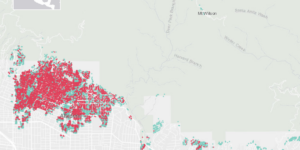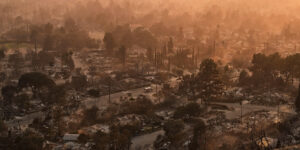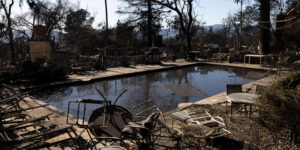The Asia Pacific region remains highly vulnerable to major catastrophes, RMS said yesterday, announcing a list of 10 “1-in-100-year” events possible in the vast area that includes the Pacific Ring of Fire and the largest concentration of tropical cyclones.
Without providing dollar estimates of potential damage from the imagined events, RMS set out to identify events beyond replications of events already seen, including “more unusual events that nonetheless have the potential to be particularly devastating” on the list. Some were selected for the list “precisely because they are not being prepared for,” RMS said in the announcement states that even though disasters like the Palu earthquake in Indonesia and Typhoon Jebi hitting Japan have assailed the region in 2018, at a national scale there are more events to come at the 1 percent level of annual probability.
Robert Muir-Wood, Chief Research Officer, RMS, explained: “We picked this list of events to reflect credible catastrophes, not so extreme as to be beyond the concerns of the insurance sector. These are the kinds of events for which nations should also be managing their disaster risk reduction strategies.
“As we develop large stochastic simulations in catastrophe loss models, we discover a very large number of potential extreme events,” he said.
The list, in no particular order, focuses only on single events rather than event combinations, balanced among some of the principal countries in the region, RMS said. Listed by country, the potential events are in:
- New Zealand. An Mw7.5 earthquake, directly hitting the city of Wellington, accompanied by massive liquefaction in the roads and harbor reclaimed from the sea, as well as some localized changes in coastal land levels.
- South Korea. A succession of stalled depressions causing widespread river flooding and affecting the city of Seoul.
- China. An M7.8 earthquake occuring in Hebei Province 200 kilometers south of the capital, between the cities of Baoding and Shijiazhuang. Such an event would produce widespread destruction and tens of thousands of casualties.
- Philippines. An intense typhoon passing south of Luzon and making a near direct hit on Manila at Cat 4, would cause extraordinary damages.
- Indonesia. A massive eruption at the volcano on Lombok, up to 6 on the Volcanic Eruption Intensity (VEI) scale, triggered by the recent earthquakes. Sucn an eruption could cover Lombok and Bali with a twenty centimeter-plus layer of volcanic ash, causing roofs to collapse, killing agricultural crops and closing the tourist industry.
- Australia. A transitioning cyclone, comparable to the 1938 hurricane in the Northeast U.S., which makes direct landfall on the city of Perth at Cat 3 intensity would bring intense rainfall and damaging winds.
- Japan. A magnitude 6.9 earthquake occurring on the Uemachi Fault to the southeast of the city of Osaka.
- India. Extensive “100-year” flooding of the greater Mumbai area, allied with extensive wind damage, caused by a Cat 4 Cyclone making landfall and stalling close to the city.
- Taiwan. A shallow Magnitude 6.7 earthquake on the Shanchiao Fault next to the city of Taipei.
- Thailand. A Cat 3 typhoon taking an unusual westerly path, entering the Gulf of Thailand, and making landfall close to Bangkok. The combination of the shallow-water storm surge and the intense rainfall, allied with long-term land subsidence from water extraction, could put all of Bangkok under water.
Said Muir-Wood: “This list should be considered illustrative and by no means exclusive. From major earthquakes in New Zealand, Sumatra or Japan, to flooding in India and Korea, or volcanic eruption shrouding Bali in ash; any one of these catastrophic events would have major implications for the region, country, people and insurance industry.”
Source: RMS




















 Property and Casualty Insurance Trends for 2025
Property and Casualty Insurance Trends for 2025  Four P/C Insurers Are ‘AI Titans’; AI Impact Leaders Revealed: Research
Four P/C Insurers Are ‘AI Titans’; AI Impact Leaders Revealed: Research  Idaho Lab Trains Firefighters on EV Battery Safety
Idaho Lab Trains Firefighters on EV Battery Safety  Business Groups, Trial Lawyers at Odds Over Georgia’s Latest Push to Curb Lawsuits
Business Groups, Trial Lawyers at Odds Over Georgia’s Latest Push to Curb Lawsuits 



